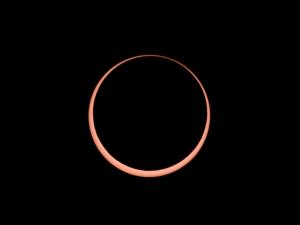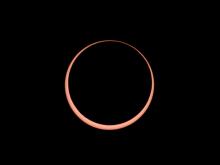Other Eclipses [1]
An annular solar eclipse will grace American skies on Saturday. Skywatchers along a narrow path from Oregon to Texas will see the Sun encircle the Moon with a bright “ring of fire.” The rest of the country will see a partial eclipse, with the Moon covering a smaller portion of the Sun.
Earth isn’t the only world to see solar eclipses.
From the Moon, the Sun is eclipsed when Earth crosses in front of it. From Earth, we see that as a lunar eclipse — the Moon turns orange or red as it passes through Earth’s shadow. From the Moon, you’d see a beautiful ring of color around Earth.
Phobos and Deimos, the moons of Mars, are so small that they can’t completely cover the Sun. But they periodically cross in front of it, blocking part of its light.
Jupiter’s big moons all create total eclipses. Jupiter is farther from the Sun than Earth is, so the Sun appears just one-fifth as wide. so it’s easier to cover up. And Jupiter has only a slight tilt on its axis, so its moons come into alignment with the Sun more often.
For most of the moons, however, the geometry is such that they cover both the body of the Sun and the corona — the Sun’s faint outer atmosphere.
Callisto, the most distant of the big moons, is five times farther from Jupiter than the Moon is from Earth. But it’s also about 40 percent wider than the Moon. That makes it the closest match for an Earth-like solar eclipse — providing the best view of the corona.
Script by Damond Benningfield


